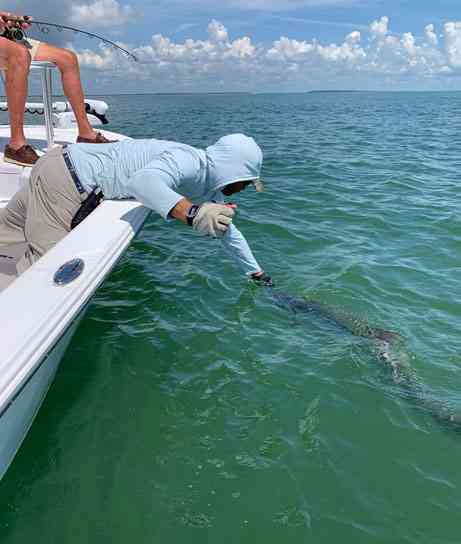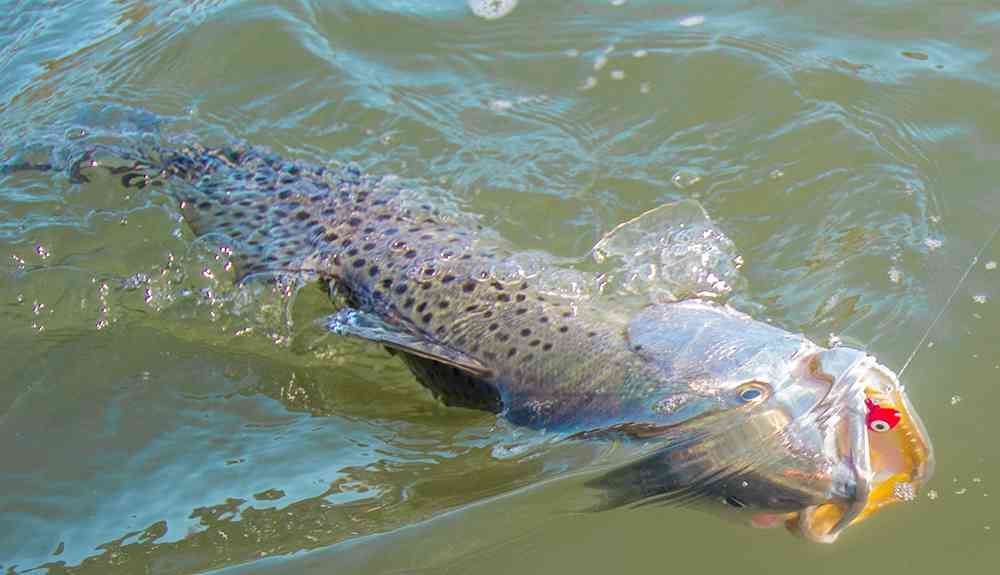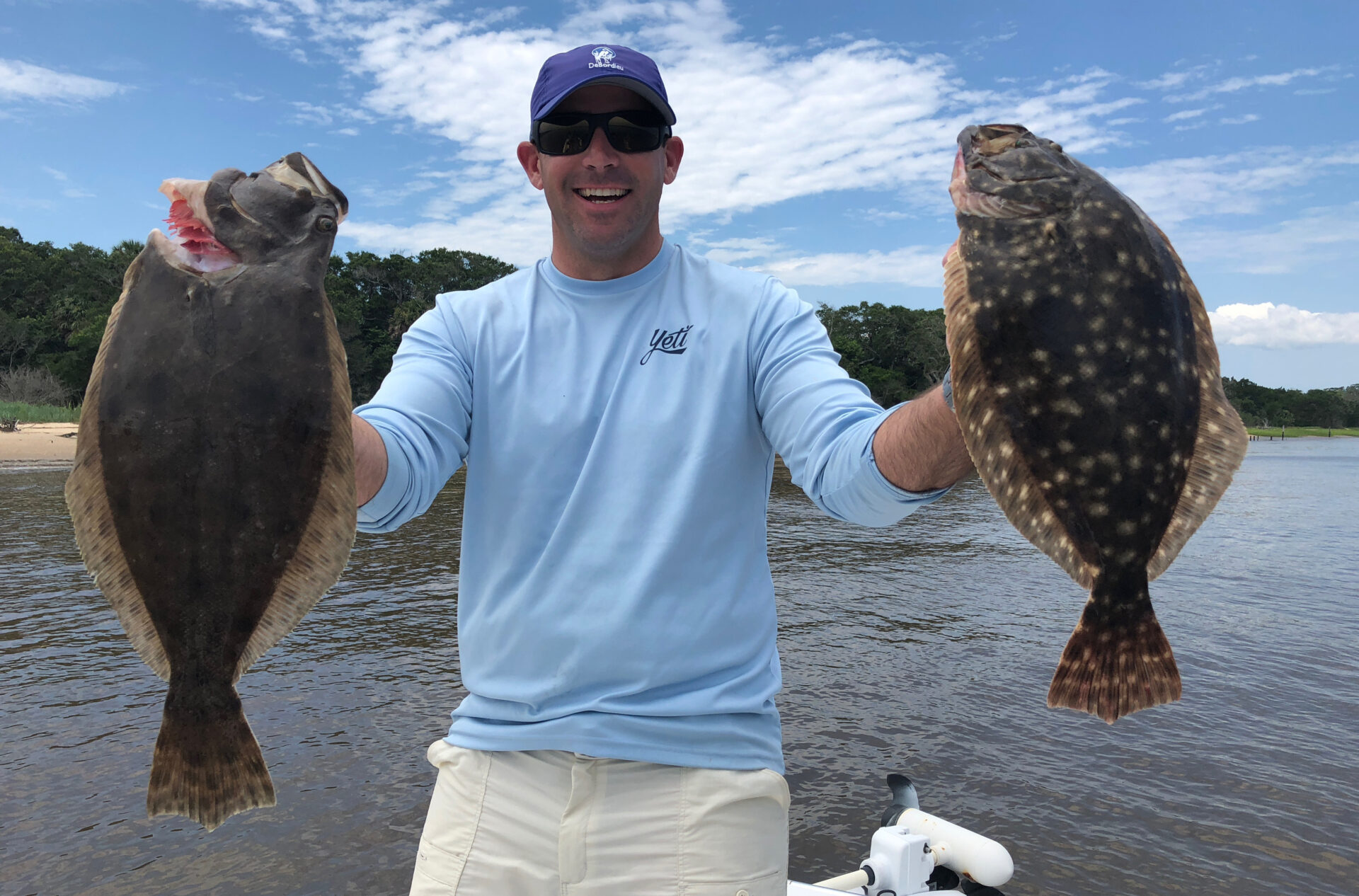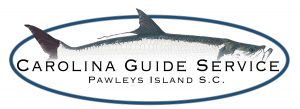Last Updated on February 12, 2025 by Eric Bonneman
Edisto isn’t your typical flashy beach town—no big hotels, no big neon signs, nothing like that. It’s quieter, with long stretches of beach with not too many folks around, roads lined with Spanish moss hanging from live oaks, and local markets selling fresh shrimp right off the boat.
Many of the folks around here spend their days fishing, crabbing, or just sitting back on their porches catching the breeze off the ocean. It’s a slice of what some folks might call “the real Carolina coast.”—a place where you can really slow down, breathe in the salt air, and feel like you’ve stepped back in time a bit.

Just about 20 miles or so south of Charleston, this spot keeps its cool even close to such a historic hotspot. But don’t let that fool you—the fishing action here can get as heated as our mid-August afternoons.
Why Edisto is Such Good Fishing
Edisto Island’s great fishing starts with the Edisto River, one of the longest free-flowing blackwater rivers in North America. The river wraps around the island, offering up some pretty great spots for kayaking or just chilling on the banks with a rod and reel.
Tip: A blackwater river is called such because it runs slow through dense, swampy forests, like the ones we have here in the Lowcountry. The water picks up a dark color because it’s steeping like tea with all the fallen leaves, pine needles, and other organic matter that tumbles in from the banks. Because the water’s got all that plant matter decaying in it, it’s usually more acidic than your regular river, but that doesn’t mean it’s bad. The water might look dark, but it’s clean and natural, just doing its thing the way it’s done for hundreds of years. And fishing in these rivers, like the Edisto, can be amazing.
Aside from the river, you have the surrounding inlets and creeks, and salt marshes that are packed with sea life—shrimp, crabs, and a ton of baitfish. (Which attracts the bigger fish.) The estuaries around here offer some of the best inshore fishing you can find, and because it’s all so untouched and raw, the fish are thriving.
In addition to the great freshwater and brackish water fishing, the Atlantic Ocean provides ample opportunities for deep-sea and nearshore fishing. Just a few miles offshore, you can find artificial reefs and natural banks that are hotspots for sport fishing.
This all means that you’re not just stuck with one kind of fishing here, either. Whether you’re looking to go shark fishing close to shore, fly-fish for reds in the shallows, or maybe try your luck with the bigger game fish nearshore, the island has it all.
Its geographic position off the main track keeps the waters from getting too crowded, which means less pressure on the fish—and more action on your line.
What Fish are Biting at Edisto?
Around here, we talk a lot about redfishing—especially on those shallow mudflats along the Edisto and ICW. In the cooler months, these waters are swarming with red drum. You throw anything that looks like food their way, and they’re likely to bite.

But when the sun’s out and the water heats up, you’ve got your pick of the litter: tarpon, trout, even sharks (blacktips, bull sharks, spinner sharks, and more).
For those of you who enjoy the challenge of lighter tackle, the speckled trout around here put up a pretty decent fight. They’re slippery, quick, and if you’re not on your game, they’ll make you earn every inch.

Don’t sleep on tarpon fishing and surf fishing, especially around the mouths of the North and South Edisto Rivers. (If you’ve ever wanted to tangle with a shark, this is a great place to do it.) Fish in the Edisto River include redfish (red drum) and speckled trout. There are also catfish, lurking down in the murk, as well as striped and largemouth bass. During the right season, it’s even possible to hook into a tarpon or two.
Now, if you’re venturing out from Kiawah Island or Folly Beach, you’ll find the waters are alive with everything from red drum schooling around Stono Inlet and Folly River, to dolphins that might just show up to see what’s biting.
Pro tip: The nearshore reefs are just about 5 miles off the coast and are teeming with life—flounder, sheepshead, you name it.
For the fly fishers out there, sight-fishing for redfish from October through May is something you won’t want to miss. It’s a world-class experience. Imagine you’re in just a few inches of water, sun on your back, and there’s a school of trophy reds circling in front of you. Doesn’t get much better than that.

Tips for Visitors
If you’re coming down to fish Edisto Island, think about starting at Steamboat Landing. It’s on the North Edisto River and is pretty easy to get to.
Or, if you’re feeling a bit more adventurous, head over to Rockville Village on Wadamalaw Island. The moss-draped oaks, the rustic docks, and those old wooden shrimp boats bobbing in the harbor—it’s like a scene right out of an old Southern novel. (But don’t get too lost in the old-school charm—the fish here don’t wait around for anyone!)
Edisto Island Fishing Charters & Guides
If you’re thinking about fishing around here, hiring a local fishing guide/charter service can be a good move, regardless of whether you’re a local or visiting Edisto Island for the very first time.

When you go with a charter, you’re not just paying for a boat ride, you’re getting a local fishing guide who comes with a boatload (no pun intended) of local knowledge. Captains can tell you where the redfish are biting, what the trout are hitting on, and when the tarpon are likely to show.
They know every bend in the river and every nook along the coast where the fish like to hide. They’ve got the right gear on board too, and they’ll rig it up right for whatever’s in season.

Edisto’s waters can be especially tricky to navigate with all the shallows, oyster beds, and tides that can shift quickly. A local captain is experienced at avoiding all those potential issues that can mess up an otherwise good day on the water.
Edisto Island fishing charters take the guesswork out of where to go and what to use, letting you focus on fishing, relaxing, and having fun.
A Quick Note
Edisto Beach, and Edisto Island aren’t exactly the same place, though fishermen often toss around the names like they are.
- Edisto Island is the whole island itself, which is part rural, part residential, and stretches over a good chunk of land surrounded by marsh and water.
- Edisto Beach is a specific part of the island, a small town right on the oceanfront. This is where you’ll find most of the public beaches, vacation homes, and small local businesses. It’s more of the tourist hub during the summer months.
- When folks just say “Edisto,” they could be referring to either the island as a whole or just the beach, depending on the context. Usually, the locals know from the conversation which one’s being talked about, but it’s good to clarify if you’re planning a visit or talking details.
Fishing Edisto Tips
-
Watch for tailing reds at low tide. On the mudflats around Edisto, redfish will tail in the shallows when they’re feeding, especially during lower tides. If you see their tails breaking the surface, it’s a good time to make a quiet approach and present a well-placed bait or fly. Approaching too fast or making a noisy cast will send them scattering. If you’re fly fishing, a shrimp or crab pattern works well. Light soft plastics on a jighead or cut bait on a circle hook can do the trick for conventional setups. Keep an eye on water movement too—reds will often position themselves in areas where the current naturally pushes food toward them.
-
Use shrimp as a fallback bait. Whether you’re fishing in the river, the inlets, or out in the surf, fresh or live shrimp is one of the best all-around baits you can use. It attracts everything from redfish to sheepshead, and even if your main target species aren’t biting, you’ll usually get some action. (If live shrimp isn’t available, fresh dead shrimp will still get plenty of attention, though you may find yourself dealing with bait thieves like pinfish and small croakers.)
-
Oyster bars and clusters are great spots to find feeding fish, especially redfish and trout. The structure provides cover, and the sharp shells attract small baitfish and crabs, which, in turn, bring in bigger fish. Be careful with your casts—oysters will cut a leader in no time. If you’re using artificials, a weedless soft plastic or a popping cork rig will help you fish the area without constantly getting snagged. Keep in mind that some of the best oyster beds are only accessible at lower tides, so plan your trip accordingly.
-
One of the best things you can do for yourself as a fisherman—whether you’re just out here for the weekend or you’re on the water every chance you get—is to keep track of what you’re catching. Noting where you caught fish, what the tide was doing, what bait worked best, and even the local weather conditions helps you start seeing patterns that aren’t always obvious in the moment. That redfish spot that was on fire last fall? Maybe it had more to do with the tide than just luck. The trout bite shutting off mid-morning? Could be tied to when the wind shifted. You don’t have to carry a soaked notepad in your pocket—if you have your phone with you on the boat you now have your pick of apps that let you record catches while you’re fishing—species, GPS coordinates, tides, water temperature, and so on. Then you can look back and see how your best days on the water came together, and hopefully replicate that success again and again.
- Some of the creeks off the Edisto River and surrounding marshes can get strong tidal currents, which can make fishing tricky. If the water’s moving fast, try positioning yourself on the down-current side of a point or creek bend where fish will stage up to ambush bait being carried by the tide.
-
If you’re targeting docks for sheepshead, black drum, or redfish, keep in mind that the best time to fish them depends on the tide. At higher tides, fish will move up closer to the structure, while at lower tides, they’ll often hold in deeper water just off the dock’s edges.
-
Try fishing Edisto at night in the summer. When the water heats up, many species—especially trout and flounder—become more active after dark. Fishing dock lights, bridge lights, or even using a portable green light in the water can attract baitfish and bring the action right to you.
Carolina Guide Service
Fishing Edisto Island during the summer is a must-do for any true fisherman. This area has a mix of lush habitats, abundant marine life, and gorgeous surroundings that set the stage for unforgettable fishing trips. Whether you’re aiming for redfish in the shallow flats, going after tarpon in the winding rivers, or just enjoying a laid-back day of surf fishing, Edisto has a bit of everything.

Let’s talk about someone who knows these waters inside out—Captain Jordan Pate at Carolina Guide Service. Whether it’s tracking tarpon, mastering fly fishing in shallow waters, or chasing down redfish, Captain Jordan is your guy. He’s a lifelong student of fishing, always picking up new techniques to make sure your day on the water is an adventure.
If you’re ready to enjoy Edisto’s beauty while experiencing some of the best fishing in South Carolina—book your trip with Carolina Guide Service today.
